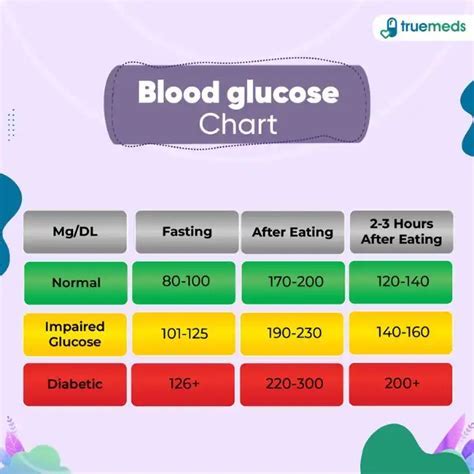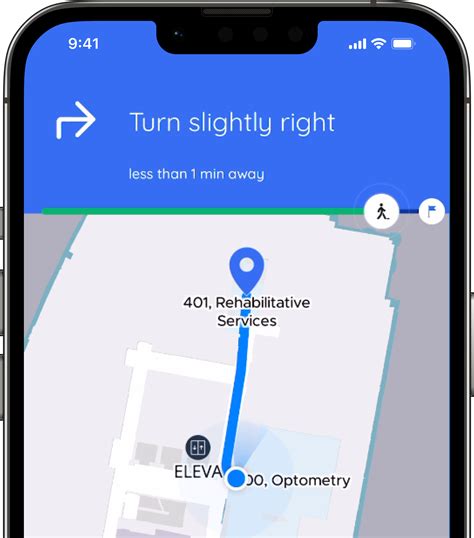Maintaining normal blood sugar levels is crucial for overall health, particularly for individuals with diabetes or those at risk of developing the condition. Blood sugar, also known as glucose, is the primary source of energy for the body’s cells. When we eat, our body breaks down carbohydrates into glucose, which is then absorbed into the bloodstream. The pancreas releases insulin, a hormone that helps regulate blood sugar levels by facilitating the entry of glucose into cells.
Understanding Normal Blood Sugar Levels
Normal blood sugar levels vary throughout the day, depending on factors such as the time of day, what and when you last ate, and your physical activity level. Here are the general guidelines for normal blood sugar levels:
- Fasting blood sugar: 70 to 99 mg/dL (milligrams per deciliter) - This is your blood sugar level after an overnight fast of at least 8 hours.
- After eating (postprandial): Less than 140 mg/dL 2 hours after a meal - This indicates how your body manages blood sugar after consuming food.
- Before meals: 70 to 130 mg/dL - This level is important for maintaining stable energy levels throughout the day.
Easy Management Tips
Managing blood sugar levels effectively can prevent complications associated with diabetes and prediabetes. Here are some easy and practical tips to help you maintain normal blood sugar levels:
Balanced Diet: Focus on consuming a balanced diet rich in fruits, vegetables, whole grains, lean proteins, and healthy fats. These foods are rich in fiber, which helps slow down the absorption of glucose, thereby preventing sudden spikes in blood sugar levels.
Stay Hydrated: Drinking enough water helps your kidneys flush out excess glucose through urine. Sometimes, thirst can be mistaken for hunger, leading to unnecessary snacking that can raise blood sugar levels.
Regular Physical Activity: Exercise not only helps you lose weight and improve insulin sensitivity but also uses up glucose as energy, thus lowering blood sugar levels. Aim for at least 150 minutes of moderate-intensity aerobic exercise, or 75 minutes of vigorous-intensity aerobic activity, or a combination of both, per week.
Monitor Your Blood Sugar: Regular monitoring can help you understand how different foods and activities affect your blood sugar levels. This knowledge can guide your dietary choices and physical activity plan.
Stress Management: Stress can raise your blood sugar levels and worsen diabetes symptoms. Engage in stress-reducing activities like yoga, meditation, or deep breathing exercises.
Get Enough Sleep: Lack of sleep can affect your body’s ability to regulate blood sugar levels. Aim for 7 to 8 hours of sleep per night to help keep your blood sugar levels in check.
Limit Sedentary Activities: Spend less time watching TV, using electronic devices, or engaging in other sedentary activities. The more you move, the better your body can regulate blood sugar levels.
Consult a Healthcare Provider: For personalized advice, consult with a healthcare provider or a registered dietitian. They can help create a diet and exercise plan tailored to your specific needs and health status.
Addressing Common Misconceptions
Myth: Diabetes is caused by eating too much sugar.
- Reality: While excessive sugar consumption can contribute to weight gain and increase the risk of developing type 2 diabetes, it is not the sole cause. Genetic factors, obesity, physical inactivity, and an unhealthy diet are all contributing factors.
Myth: People with diabetes should only eat special diabetic foods.
- Reality: There’s no need for special “diabetic” foods. A balanced diet focusing on whole, unprocessed foods can provide the nutrients you need while helping manage blood sugar levels.
Myth: If you have diabetes, you must stop eating all carbohydrates.
- Reality: Carbohydrates are an essential part of a healthy diet. The key is to choose complex carbohydrates, such as whole grains, fruits, and vegetables, which are rich in fiber and nutrients, and to be mindful of portion sizes.
Conclusion
Maintaining normal blood sugar levels requires a holistic approach that includes a balanced diet, regular physical activity, adequate hydration, sufficient sleep, and stress management. By understanding what normal blood sugar levels are and incorporating these easy management tips into your daily routine, you can effectively manage your blood sugar levels and lead a healthier life. Whether you’re at risk of diabetes or simply looking to improve your overall health, the principles outlined here can guide you towards a path of wellness and prevention.
What is considered a normal blood sugar level after eating?
+A normal blood sugar level after eating (postprandial) is considered to be less than 140 mg/dL 2 hours after a meal. However, it’s essential to consult with your healthcare provider for personalized targets based on your health status and any existing conditions.
How can I lower my blood sugar levels naturally?
+Natural ways to lower blood sugar levels include maintaining a balanced diet, staying hydrated, engaging in regular physical activity, managing stress through exercises like yoga or meditation, and ensuring you get enough sleep. It’s also crucial to monitor your blood sugar levels regularly to understand how different activities affect them.
Can diet alone manage diabetes?
+While a well-planned diet is essential for managing diabetes, it is often part of a comprehensive plan that may also include regular physical activity, monitoring of blood glucose levels, and, in some cases, medication as prescribed by a healthcare provider. The goal is to keep blood sugar levels within the target range to prevent complications.



